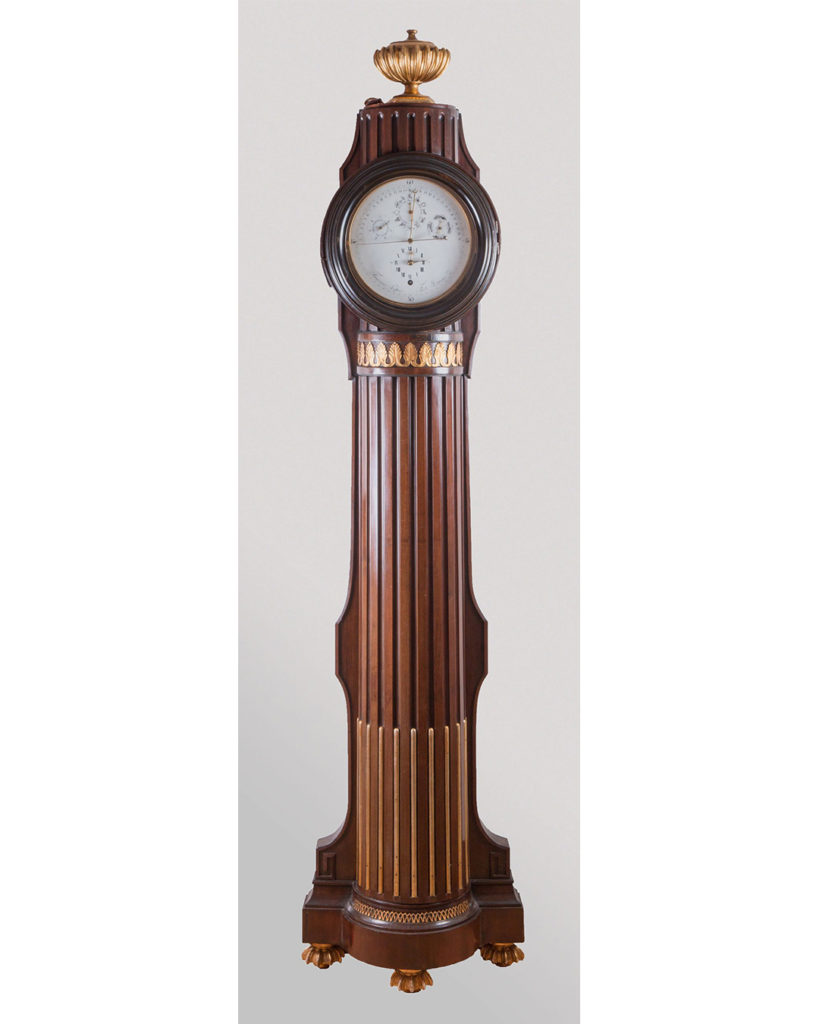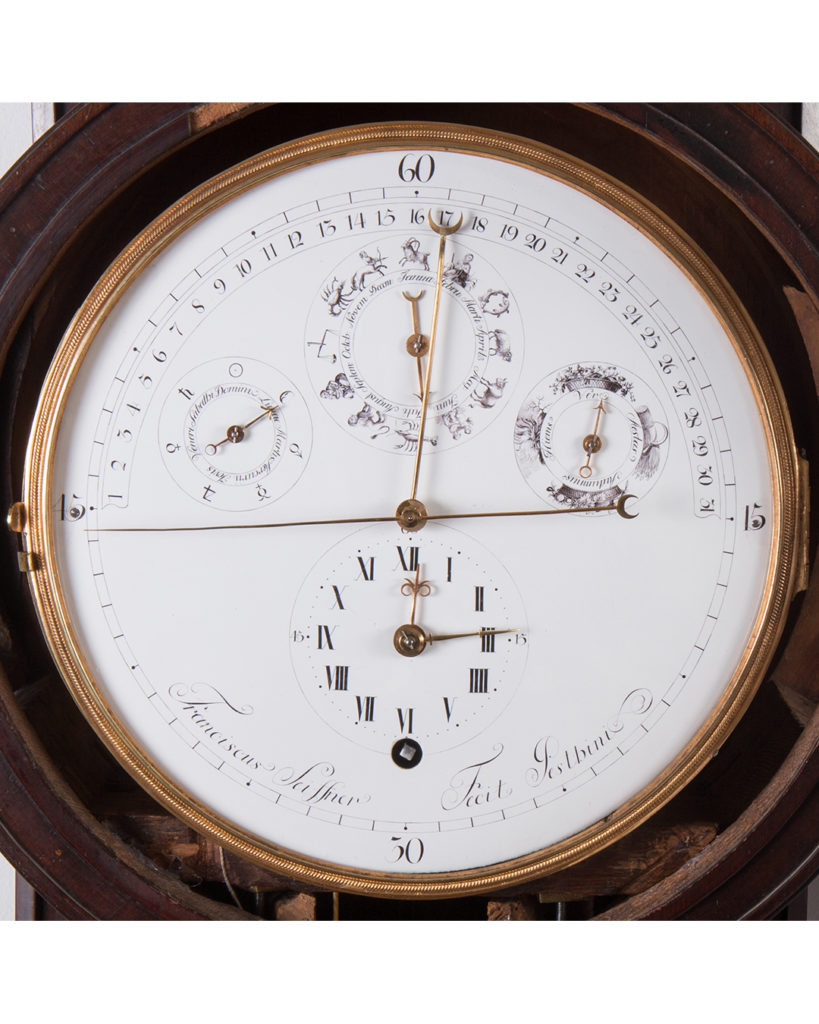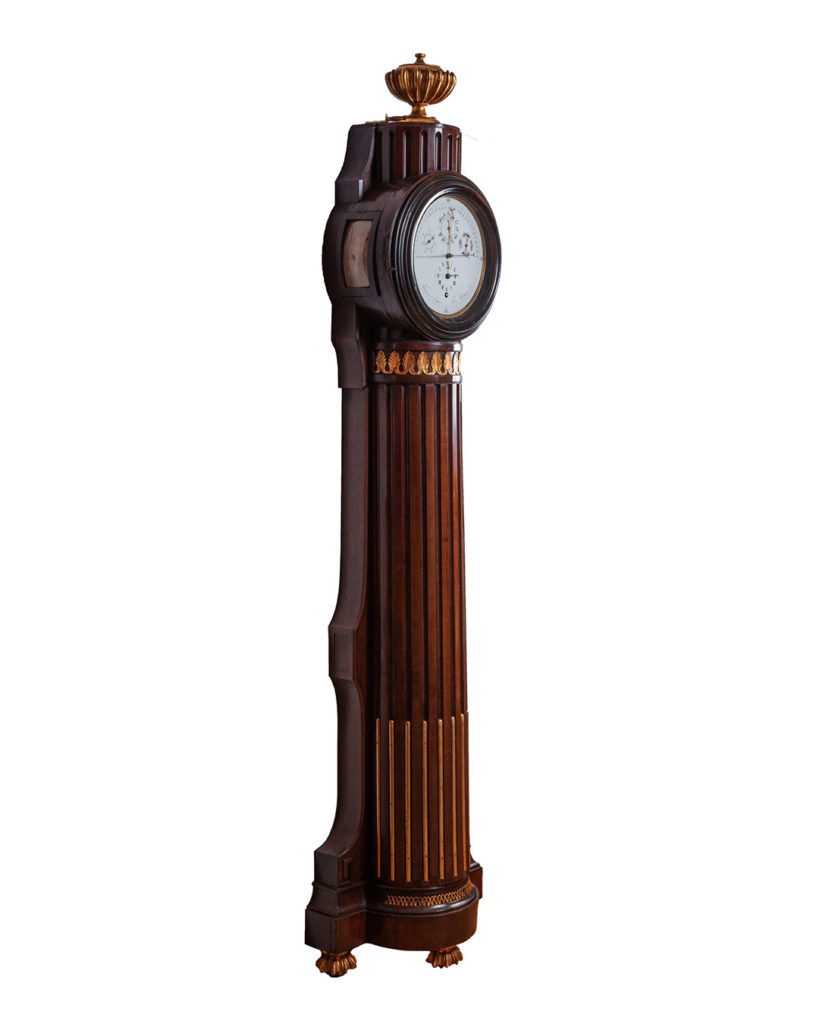Sale to the Budapest Museum of Applied Arts
After several years of negotiations, the Budapest Museum of Applied Arts was able to acquire the important astronomical floor clock by Franciscus Seiffner from the property of the architect Mihaly Pollak, who in addition to the National Museum in Budapest had built other public buildings and churches in Hungary with special state funds.



Grandfather clock
Clockmaker: Franciscus Seiffner
Date: Budapest, circa 1795
Measurements: H 223 x W 56 x D 32 cm
Signature: „Franciscus Seiffner fecit Pesthini“
Description: duration 8 days, Mahogany veneered case in the form of a fluted pillar, carved and gilt mouldings and crest, enamel dial, center sweep second’s hand, perpetual calendar with retrograde date display, jumping date, indication for week day with daily regents, month with signs of the zodiac, indication of the four seasons, excentric indication of time, fire gilt brass hands, gilt engine turned bezel, recoil escapement, spring suspension, brass rod second’s beating pendulum. Clockmaker repair signature at the plate:„Johan Hillrich hat das Schlagen von seiner Erfindung zu gerichtet 1833 den 1. Nov.“
Compare longcase clock Geymüller-Schlössl (MAK, Vienna, inv.no. 1480) or a longcase clock by Fertbauer in Uhrenmuseum Wien, in: Frederick Kaltenböck: Die Wiener Uhr. Wien – Ein Zentrum der Uhrmacherei im 18. und 19. Jahrhundert, Munich 1988, p. 27, fig. 26.
Provenance: Mihály Pollack (1773 Vienna – 1855 Pest) famous Austrian-Hungarian architect of the neoclassicism, studied at the Vienna Academy of Arts, important buildings: Hungarian National Museum.
2021 acquired by Museum of Applied Arts Budapest